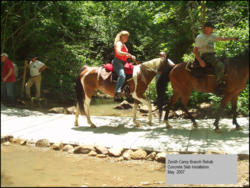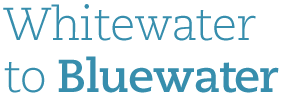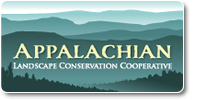Restoration of Critical Habitat for LIsted Mussels and Fish, Big South Fork NRRA, TN/KY
| Project Start Date | |
|---|---|
| Project Leader | |
| Organization |
The Big South Fork National River and Recreation Area is a focus for major conservation efforts due to the outstanding aquatic features found in the Big South Fork of the Cumberland River. The park is also a favorite location for equestrian riders, cyclists, and hikers. Managing a park for such multiple uses, while conserving biodiversity, is wrought with challenges.
Partner(s): The Nature Conservancy Tennessee Wildlife Resources Agency US Fish & Wildlife Service Kentucky Department of Fish & Wildlife Resources National Park Service

- South Fork Cumberland River -
- Big South Fork NRRA, TN/KY
Description of Site:
- 125,000 acres in north central Tennessee with 450 miles of trails.
- 475 miles of streams with trails crossing at various points.
-
128 fish species and 31 mussel species, of which 10 mussel species and three fish species are endangered.
Problem:
-
Often trail crossings are in un-protected fording areas, resulting in crushed organisms, increased erosion and greater stream sediment load.
Strategy:
- Delineate the corridor with slab rock.

- Unprotected fording areas threatened
- fish and mussels.
- Create stream crossings hardened concrete planks running parallel to the stream bank, placed across the width of the stream
- Utilize funding to purchase slab rock, tri-lock block and other materials.
-
Utilize volunteers to install purchased slab rock; utilize park crews to install tri-lock block.
Success:
- Park monitoring efforts have documented a drastic reduction in the number of animals and plants crushed by user groups and decreased sediment load. The corridor is now clearly marked.

- Park visitors use newly-constructed
- stream crossings.
- Duskytail darter, an endangered fish, has been observed using the area since the rocks were placed. It may take the mussels a few years to occupy the new habitat.
- Nine crossings are installed. Goal is 250 crossings.
Contact Info
- Steve Bakaletz
- National Park Service
- Email: steve_bakaletz@nps.gov
Related Resources & Documents
Associated Locations
| Town | zip code | county | state | congressional dist |
|---|
Barriers
| Name of barrier | Latitude | Longitude | FONS ID | FIS Project ID | FWS Acc. # |
|---|
Document Actions






